I maintain a small mailing list of those responsible for organizing New Year’s Levees each year, and around about this time I generally get in touch with them to start gathering information for the new year. Today, though, I sent out this notice:
With the announcement this morning from Hon. Antoinette Perry that there will be no New Year’s Levee held at Government House on January 1, 2021, I wanted to let you all know that I will not be maintaining a list of levees for New Year’s Day 2021, as I expect most if not all will be cancelled in the same fashion.
Best wishes for 2021 regardless, and I hope to see you all back on the levee circuit in 2021.
As much as I will miss the annual tradition, levees seem tailor-made for COVID-spreading, and the Lieutenant Governor deserves our thanks for leading the way this year.
Shortcuts are a delightfully powerful set of digital Lego blocks for iOS, a modern day HyperCard, in a way. This guide from Apple to creating Siri Shortcuts using web APIs prompted me to try creating one for myself, a Shortcut to retrieve the percentage of PEI’s electricity load generated from the wind.
As a starting place, I used this wind energy API endpoint, the same endpoint that my PEI Electricity web app uses. It returns real time data about wind energy load and generation on Prince Edward Island, like this:
{
"current": {
"updatetime": "2020-11-05 12:59:00",
"uptimetimehuman": "Thursday at 12:59 PM",
"on-island-load": "202.86",
"on-island-wind": "163.86",
"on-island-fossil": "0.00",
"wind-local": "77.98",
"wind-export": "85.88",
"percentage-wind": "80.77"
},
"previous": {
"updatetime": "2020-11-05 12:44:00",
"uptimetimehuman": "Thursday at 12:44 PM",
"on-island-load": "202.80",
"on-island-wind": "164.65",
"on-island-fossil": "0.00",
"wind-local": "77.36",
"wind-export": "87.29",
"percentage-wind": "81.19"
},
"peak": {
"peak": "213",
"hightime": "10:14 AM"
},
"peakwind": {
"peak": "179",
"hightime": "8:29 AM"
}
}
That’s got everything I need in an endpoint to make a Shortcut: I want the Shortcut to use the “percentage-wind” value, 80.77 in this example.
To create the Shortcut, I launched the Shortcuts app on my iPhone, tapped the “+” to create a new one, gave it the name “what’s the wind energy,” and then added my first action, a Get Contents of URL action to get the contents of that endpoint:

Next, a Get Dictionary Value action, as I needed to pull out just the value for percentage wind energy generation, using simple dot notation for current.percentage-wind:

Because that’s returned as a decimal value, and I didn’t need that much granularity, I rounded off the value using a Round Number action:

I added the words “per cent” using a Text action:

Finally, I added a Speak Text action to read the result:

With the Shortcut saved, I can say “hey siri, what’s the wind energy” to my iPhone and it tells me.
You can save yourself the trouble of recreating the Shortcut from scratch by installing on your iPhone here.
That was so much fun I decided to make another Shortcut, this one to tell me how much water our household has used today.
For this one, I used this API endpoint, which returns data, used also by my Consuming.ca web app, about my water usage, like:
{
"metadata": {
"serialnumber": "30142394",
"address": "100 Prince",
"location": "Basement",
"role": "Household",
"metertype": "water",
"metertypecode": "13",
"colour": "#30c020",
"public": "1",
"publiclabel": "Miller-Rukavina",
"active": "1"
},
"reading": {
"current": {
"value": "7697",
"datestamp": "2020-11-05 13:56:50",
"formatted": "769.70 m<sup>3</sup>"
},
"firstever": {
"value": "1171",
"formatted": "0.00 m<sup>3</sup>"
},
"firsttoday": {
"value": "7696",
"formatted": "769.60 m<sup>3</sup>"
}
},
"consumption": {
"today": "100 ℓ"
}
}
The Shortcut for this is essentially the same as “what’s the wind energy,” but it’s called “how much water have we used today,” and it uses the value consumption.today. If you have particular interest in knowing how much water I’ve used today, you can install this Shortcut on your iPhone too.
In the game of grief, I’ve had a special bonus round as I’ve worked to clean up Catherine’s studio, across the hall from my own shop, over the last ten months.
St. Paul’s Anglican Church has been extraordinarily patient with me, for which I will be forever grateful; as recently as a month ago the studio looked like a slightly reordered version of how it was when Catherine last shut the lights and closed the door. It was an overwhelming task, and I was overwhelmed; deadlines I set for myself — March 31, September 30 — came and went, and I couldn’t find the motivation to just deal with the everything of it all.
While there was, indeed, the practical challenge of simply dealing with unravelling the materials and supplies accumulated over a lifetime of art practice, lurking in the background was the larger spiritual challenge of what amounted to erasing tangible evidence of Catherine. I wasn’t fully aware of just how much of the daunting quality of the task was daunting because of that until this morning, as I made the last push to the summit.
The summit, it turns out, is a lonely place, and the prize for playing the bonus round is a physical manifestation of the emptiness that Catherine’s absence has left.
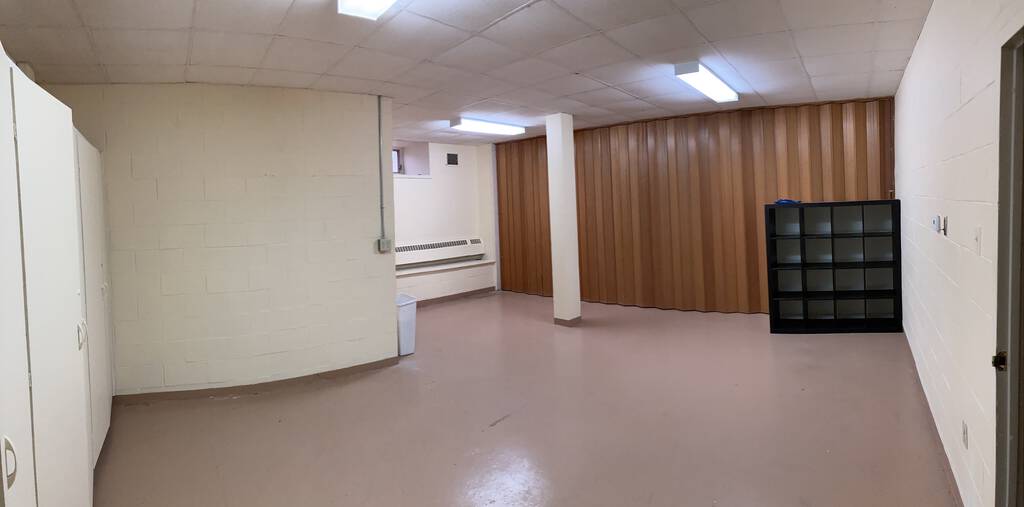
I confront the emptiness with equal parts melancholy and hope; as I wrote my family yesterday, “What I can feel happening slowly, sometimes very slowly, is the start of the end of the time of my life where I am defined by Catherine’s absence and instead am focused on other things. Future things.” Reaching the summit of emptiness is an important way station, a necessary one. I don’t want to stay here too long, but I do have to stay here for awhile.
I first met Lucy Morkunas in the most in-passing way that one can: in the chaos of the summertime Charlottetown Farmers’ Market she stopped me, introduced herself, and told me I had to meet her friend Kent, who was in town from Ontario; she thought we’d get on (we did meet, several times, and did, indeed, have overlapping sensibilities).
Earlier this year I heard from a mutual friend that Lucy had been diagnosed with collecting duct carcinoma, a rare form of kidney cancer. Knowing that we’d already met, and that I’d some recent familiarity with life, cancer, dying, and death, our mutual friend suggested I might reach out. I did, and the result was a visit to Lucy’s home this summer bearing sandwiches from town.
If you read The Guardian, you might recognize Lucy’s name from the article P.E.I. woman forced to pay for cancer drug already on provincial formulary that ran in the paper on Monday: since that summertime sandwich Lucy and I shared, she’d started and stopped chemotherapy (because it wasn’t working), and has started taking Nivolumab, an immunotherapy that, in her case, has shown great promise.
The problem Lucy’s running into–and the reason for the article in The Guardian–is that the treatment’s costs aren’t being covered by provincial medicare, leaving her to pay the $7,000 per dose cost out of her own pocket. Lucy’s request to Health PEI to cover the cost was met with the response that it “is not in alignment with the criteria and therefore is not eligible for funding at this time.”
I had lunch with Lucy again today.
It was clear that as much as she is, understandably, concerned about getting her treatment funded, she is concerned about the opacity of Health PEI’s response: she wants to know what the criteria are, and why her situation is not in alignment with them.
She wants this for herself, but also, equally wants it for the rest of us who may one day walk down this road. Living with cancer is hard enough without having to run a part-time advocacy and logistics operation on the side, and Lucy is simply advocating for a process that is clear and transparent.
Catherine was fortunate that the treatments for her metastatic breast cancer were all covered 100% by medicare; we were never faced with having to lobby health officials for medication that could keep her alive.
Cancer care is a labyrinth, and Lucy is the first to admit that there are dead ends, points at which treatment must come to an end. What she simply wants to know–and what I think we, in whose name her treatment might be funded, should want to know–is what the rules are and how the decisions are made. We owe Lucy that. We owe ourselves that.
I woke up this morning determined to, well, not particularly determined to do anything of great import. But, as the day progressed, I decided that today was the day to open an online store for my letterpress goods.
It’s been a whirlwind effort, but I’ve done it, and it’s open now for your shopping convenience at:
https://shop.QueenSquarePress.ca/
To get to this point, here’s what I did today:
- Came up with a new name for my press. I’d been using “Reinvented Press,” named after my digital business, by default over the years, but I was never happy about it: the press needed a name of its own. Given that I live and work on Queen Square, Queen Square Press seemed like the right name (a few years ago, after talking to historians and doing some of my own research, I came to the conclusion that Queen, singular, is the proper name of the square).
- Registered “Queen Square Press” as a trade name for Reinvented Inc. This required, first, a name reservation ($50) and, once I was cleared to use the name, a $90 registration fee. I was very impressed with the turnaround time on both, and I was able to self-service the entire thing on the provincial government’s website.
- Registered the domain name QueenSquarePress.ca with Webnames.ca, for $13.99 a year.
- Signed up for a Big Cartel account.
- Set up DNS for shop.queensquarepress.ca to point to my new Big Cartel site.
- Took photos, created products, wrote descriptions, set prices, set up shipping.
- Upgrade from the free 5-product Big Cartel plan to the $9.99/month plan so that I could do inventory tracking and sell more than 5 products.
- Launched the shop.
I like Big Cartel: it’s everything you need, and not a single bit more. It’s simpler than Shopify and considerably less chaotic (and with a different business model) than Etsy. It suits me.
The photos aren’t perfect. Not all the things I plan to sell are in place. I might lose money on the shipping. But launching an imperfect shop, in a day, was a better plan than never launching a perfect shop, over a lifetime. Thank you to the excellent Expedition Press, from whom I just purchased a whack of beautiful things, for the inspiration.
Enjoy.
I’m down to the last few things to find new homes for in Catherine’s studio, the large, unwieldy things that don’t have a self-evident destination.
Maybe the destination is you? I’ll happily give any of the following away to anyone who will provide a good home.
Please let me know. Local pickup in Charlottetown only.
Walking Spinning Wheel TAKEN
This is giant (the wheel itself has a diameter of 4 feet) spinning wheel, also know as a great wheel.
The great wheel was one of the earlier types of spinning wheel. The fibre is held in the left hand and the wheel slowly turned with the right. This wheel is thus good for using the long-draw spinning technique, which requires only one active hand most of the time, thus freeing a hand to turn the wheel. The great wheel is usually used to spin short-staple fibres (this includes both cotton and wool), and can only be used with fibre preparations that are suited to long-draw spinning
It’s not feature-complete — the smaller fiddly bits are missing — but in the right hands it could spin again. Or make an addition to your collection of Canadiana.
\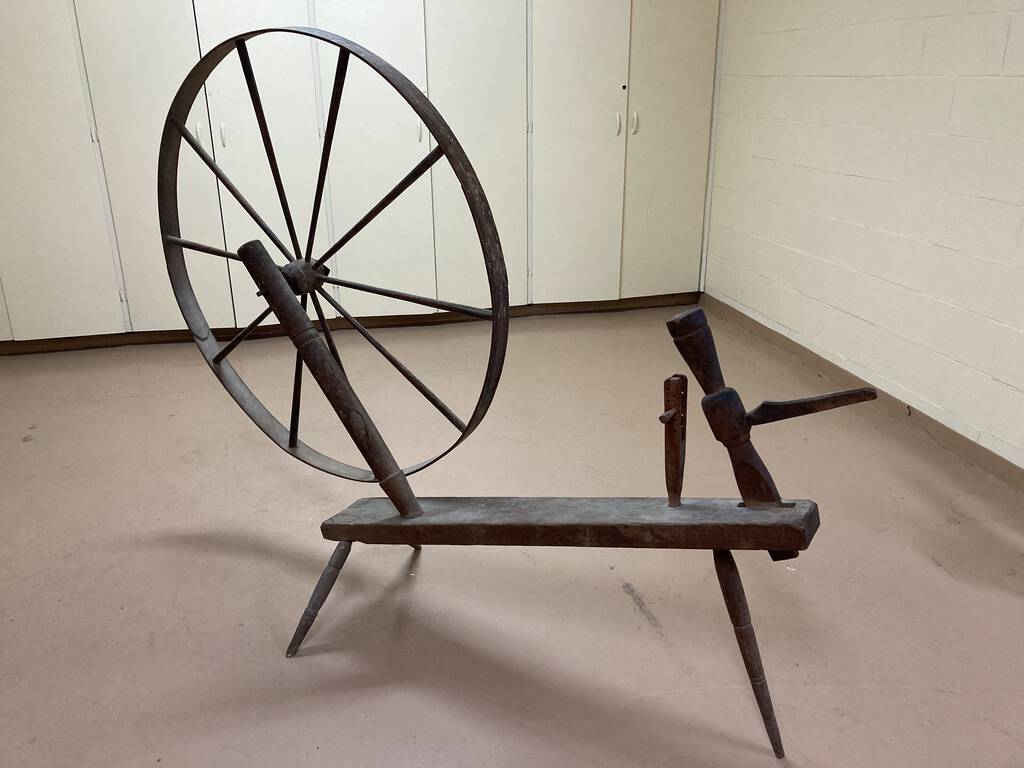
Yarn Winder TAKEN
Whenever I didn’t know what a particular piece of her fibre equipment was called, I’d call it a “niddy noddy.” Which is an actual piece of equipment. This is not a niddy noddy, it’s a wooden yarn winder. It winds yarn. One of the “arms” is coming unglued and needs some repair, but it turns well.
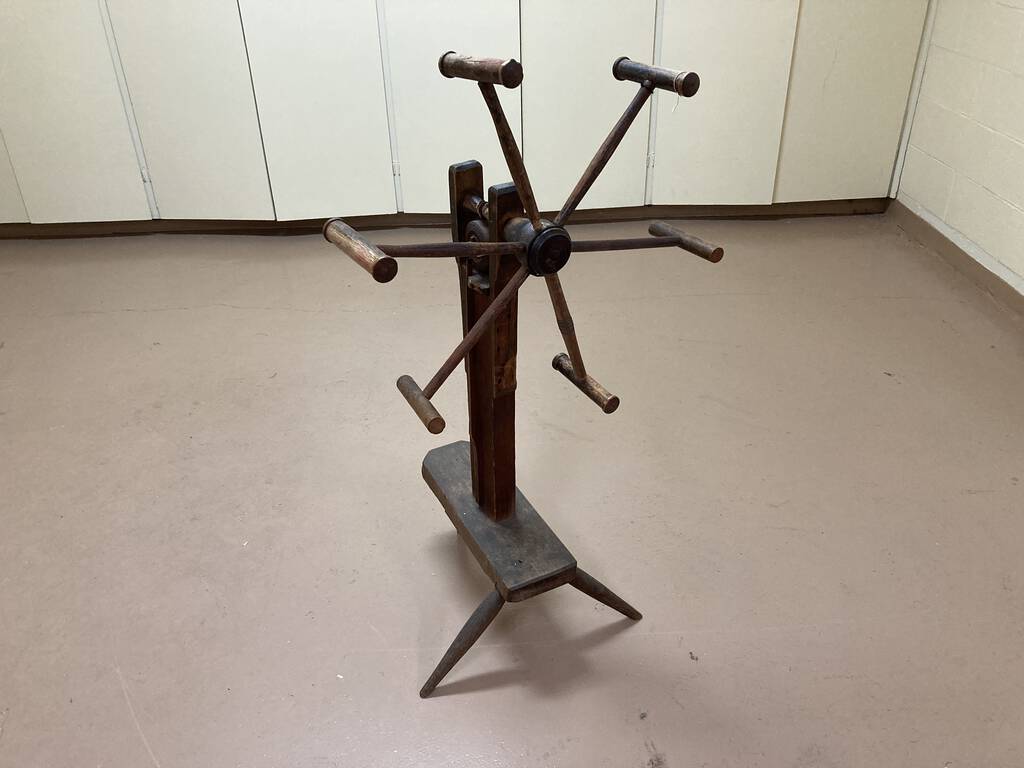
Wooden Stands TAKEN
Catherine used these looping or wrapping or hanging or some such fibre gymnastics. If you’re in the market for some flexible things that might become room-dividers, these might be for you.
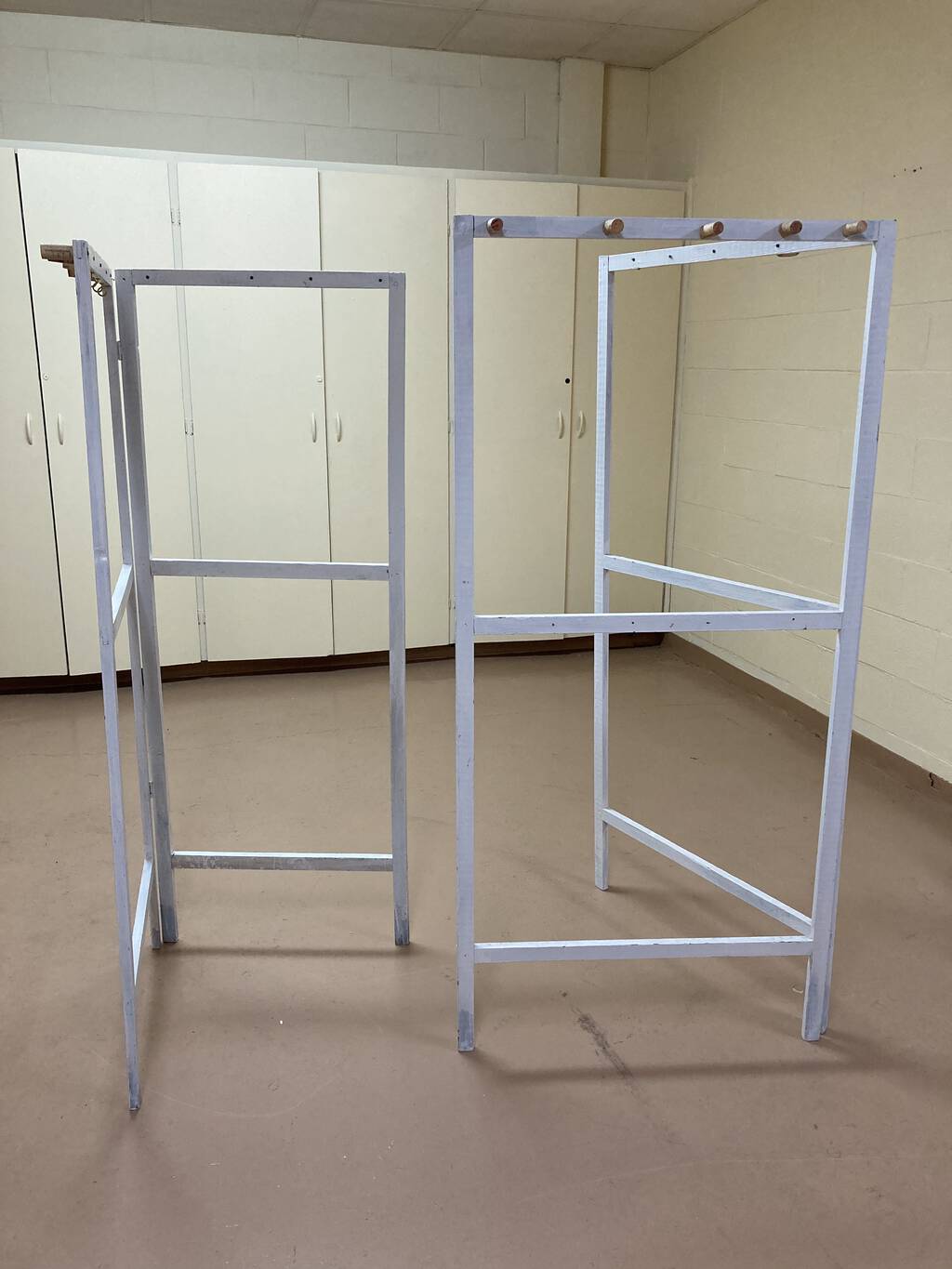
Tapestry Loom
From Catherine’s mother: “the tapestry frame can be used for embroidery or any needle work to stretch the fabric and then work on.”

Boot Jack TAKEN
From Catherine’s mother:
The two loops at the end is a boot jack. It used to be on our mud room. Hold the big hoop up right and use the bottom loop to pull your boots off. No messy fingers.
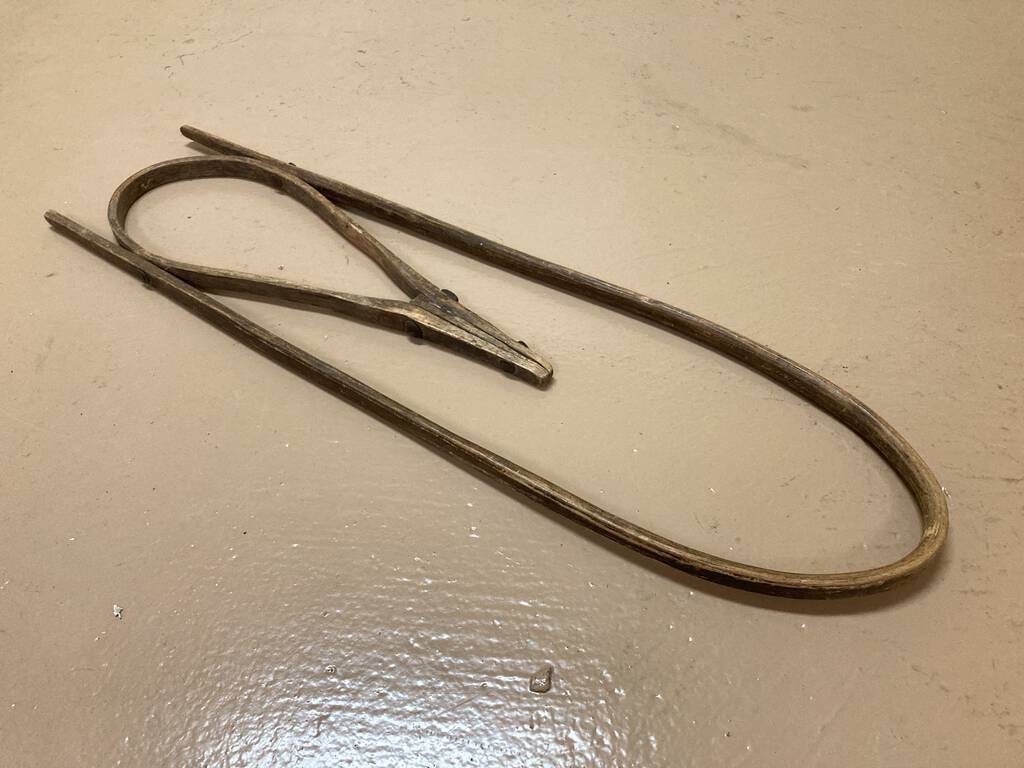
Our Sunday drive this week was to Montague, and a first visit to The Lucky Bean Café on Main Street.
We’d been in the building before, back in the days when it was more french fries than flat whites; in its new incarnation it’s gone full-on third wave. I had a solid coffee, Oliver a solid London Fog.
We came back to town the long way, via Caledonia (and its sparkling new roundabout), Wood Islands (where we topped up the EV), and Brush Wharf Provincial Park (which doesn’t actually exist; more on that later).
The weather was a warm 9°C all afternoon, and it was bright and sunny (although the switch off of daylight savings time meant it got dark at 5:00 p.m.).

While it wasn’t quite the last flight out of Saigon, I just heard the last scheduled WestJet for Toronto, Boeing 737 C-GQWJ, rumble into the sky.
While we’re still connected to Canada by the one daily flight to each of Toronto and Montréal on Air Canada, WestJet’s pullout does reinforce the “cut off from the rest” feeling of living on this Island, in both the negative and positive senses.

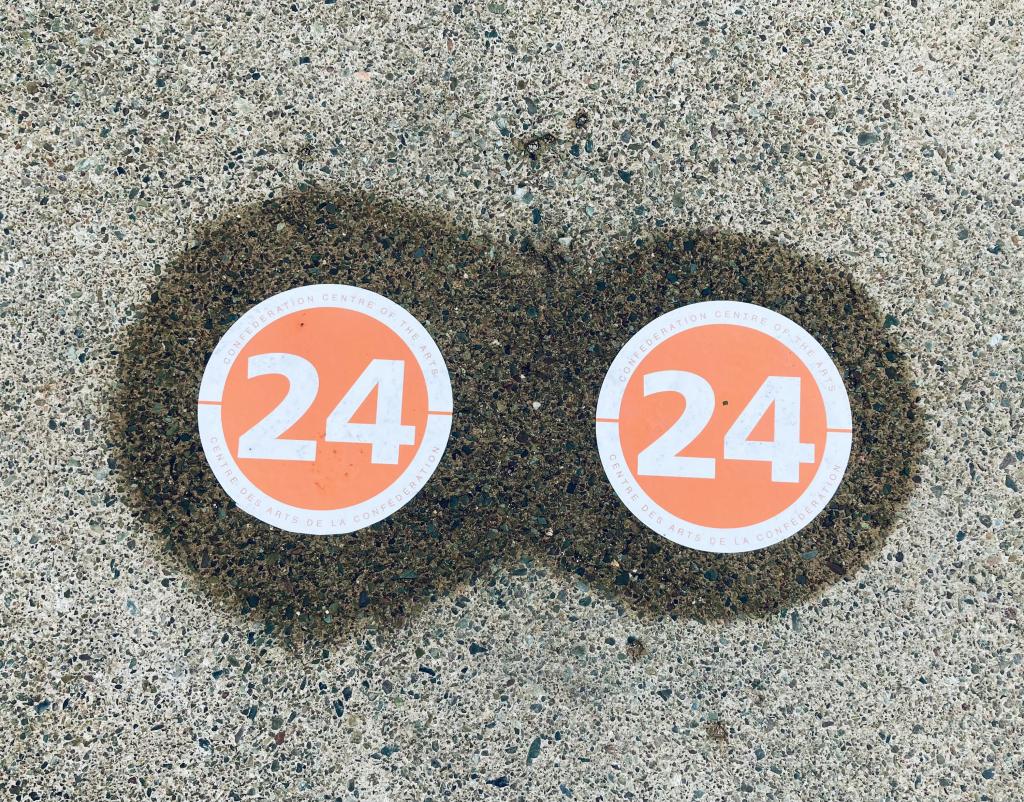

 I am
I am